Introduction
Jamini Roy was an Indian painter born in 1887 CE in Bengal. He was a self-taught artist who combined traditional Indian folk art with modern techniques.
His style was distinctive, with bold lines and vibrant colors that brought his subjects to life. His use of indigenous materials like homemade paints made from natural pigments further added to the charm of his works.
The artist painted various subjects, including rural life and mythological figures. He portrayed them with simplicity and grace, capturing the essence of Indian art.
As he once said, “Art should be for the people, not just for the elite.” The unique style and contributions of Jamini Roy have made him a legendary figure in Indian art.
While traveling through India, if you went to West Bengal, then you should definitely check out their artworks. It will be a definitely different experience for you. You will see that the most artists of West Bengal love protected paintings of Jamini Roy rather than modern artwork.
The scorched soil of a Bankura district in West Bengal that is always praying for rain. Bankura, with its dry soil tinged with shades of red and green, was once the birthplace of a vibrant folk culture that flourished in abundance.
The legacy may have dried up but is far from dead. These temples that are built still maintain examples of the Terracotta art of the region. Behind much of the simplicity in paintings of Jamini Roy lies in the heritage of his house.
In this Jamini Roy Biography, you will uncover the different aspects of life of Jamini Roy. Learn about his family, education, artistic career and other things that happened in his life.
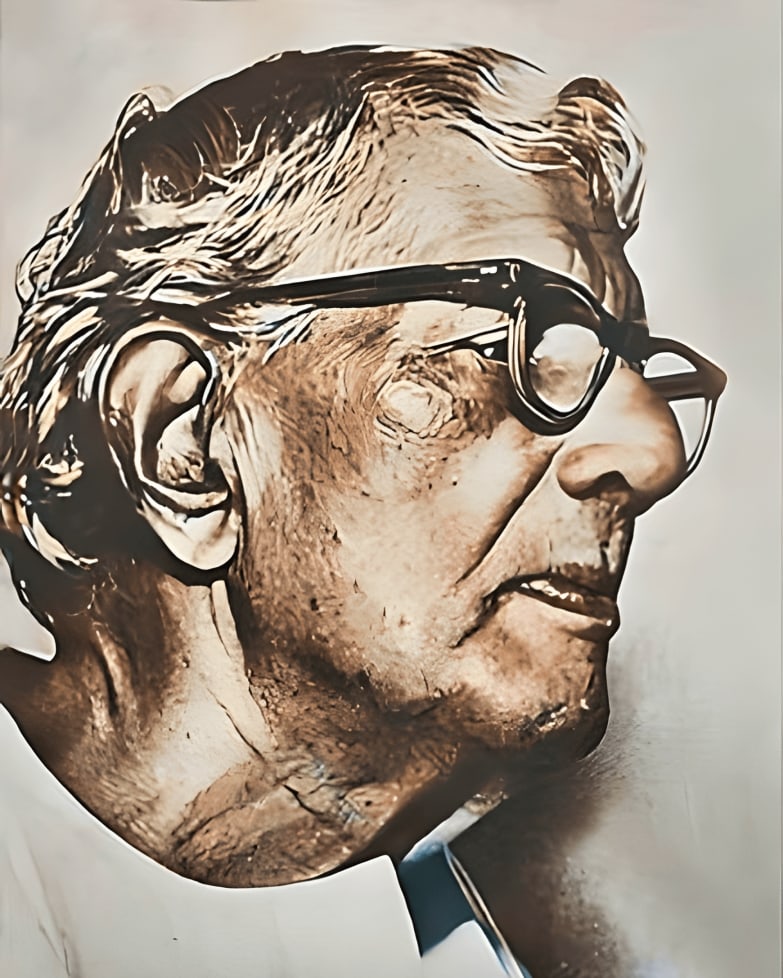
Brief Information
|
Information
|
Details
|
|
Full Name
|
Jamini Ramtaran Roy
|
|
Identity
|
Prominent Indian Artist from West Bengal, India. He specifically dedicated his life to the art of painting.
|
|
Birth
|
April 11, 1887 CE at Bellator, West Bengal, India
|
|
Parents
|
Mother: Gayatri Devi, Father: Ramtaran Roy
|
|
Occupation
|
Painting
|
|
Awards
|
Viceroy Suvarnapadak (1937), Padmabhushan (1957), Lalit Kala Akademiye Fellow (1955)
|
|
Signature
|
 |
|
Death
|
April 24, 1972 CE at Kolkata, India
|
Birth and Early Life
His culture of a home in Bankura, where he had been born in the middle of April 1887. In Beliatore Village, it was those village craftsmen who aroused in young Jamini his initial interest in design and form.
Family
His father Ramtaran Roy was a big landowner. Therefore, his family was financially in good condition. Ramtaran Roy was also passionate about Art. When he was in government service, aiming to do something in Art, he resigned from his job.
So, we can say, Jamini got the legacy of Art from his father. His broad-minded dad played an important role in the life of Jamini. He also agreed to send the son to Kolkata.
Education
It is said that great people give proof of his future work in an early age. Similarly, at 16 years, Jamini Roy left his home and village & went to Kolkata. In the year 1903, Jamini took admission to the Government College of Art.
After admission, he learns a lesson in the presence Abanindranath Tagore. Tagore was the vice principal of the College.
He gave personal attention to Jamini Roy to give him the traditional educational training of his time.
Learning of Academic Progress in Arts
Here at the art College, Jamini diligently devoted himself to learning Western art. He mastered the Western academic technique with great proficiency.
The encouragement and admiration of Principal Darcy Brown, form the primary skills of Jamini Roy in his life.
Artistic Career
In 1908 CE, Jamini Roy successfully obtained his diploma in fine arts. He became proficient in the Modern artwork he learned in his college. But afterward he realized that he does not have an interest in the Modern style of Art.
Hence, he dedicated himself to adopting an Indian style, disregarding any concerns about revenue and earnings. Thereafter, he left college and earned success as a portrait painter in oil.
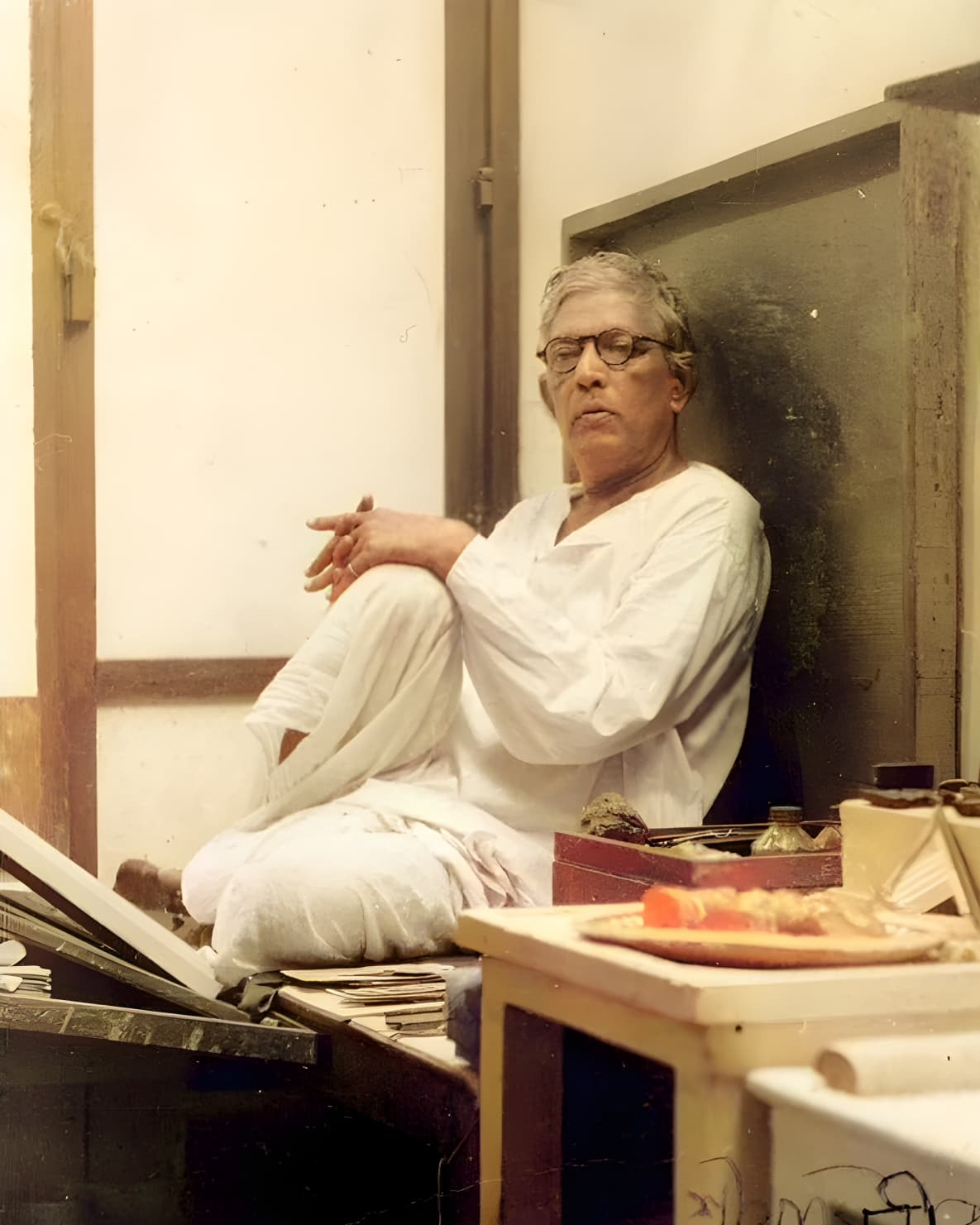
Portrait painter to Traditional Indian Art of Painting
We discovered an extraordinary portrait painted by Jamini Roy, showcasing his unique artistic style.
Jamini Roy started his career as a portrait painter on commission. But, he was not happy with his work. So, once in the year 1925 CE, he went to Kalighat temple. Outside the temple he saw his interesting style of painting.
Thoughts of Jamini Roy on Bengali Art
He came to understand his aim to come here. He knew that Bengali folk art was used for three different things.
The first thing is that normal people’s lifestyle business can be kept in front of the world. The second thing is that our art can be made available for anyone.
The third thing is that the world understands the Importance of Indian Art.
Jamini Roy Painting Style
Jamini adopted the Kalighat style of painting. Therefore, thereafter we can see his paintings in Kalighat style of paintings. In the decade of 1930 CE, he got the fruit of his hard work. Because people started loving his paintings.
In his paintings, we can see the image of the style of Kalighat. He became so proficient in this style; it seems paintings are talking something with us.
Exhibition of Paintings of Jamini Roy on the Kolkata roads
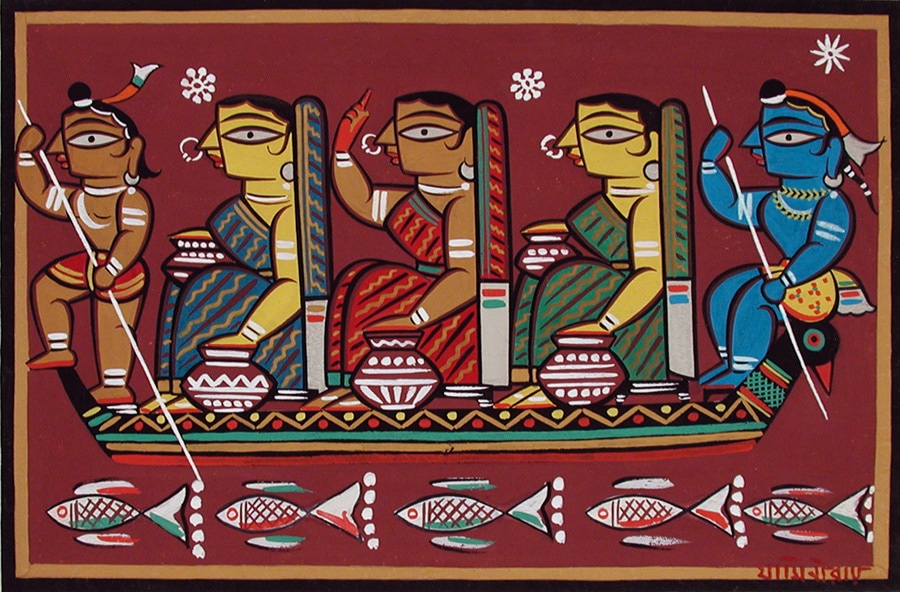
In the 1930s decade, created so many popular artworks. In 1938 CE, during British rule in India, he became the first Indian artist to have his artwork exhibited on the roads of Kolkata.
In 1940, his paintings became famous among middle class Indians. Therewithal, people from European countries also aspirant to buy his paintings. He got surprised because of that much support & popularity among worldwide people.
After some interval, his paintings represented the indigenous traditional Kalighat style as well as Terakota style of painting of Vishnupur.
Fake satisfaction with Real Self Expression
He made brilliant self-portraits in the prime of his fame as a portrait painter. When Jamini Roy saw affluence but no joy, it gave living to him but offered no life to him. A fake could satisfy the need for a mind. However, if the monotony of the regular and the desire for self-expression work.
The gap widened between the craftsmen of the village, as the folk painters focused on their art and the terracotta figurine makers of Bankura and Vishnupur did the same. The moment of decision had arrived.
Jamini accepted poverty to adapt Kalighat Style
Jamini gave up painting contemporary portraits, preferring poverty and artwork. Even though he was married, and there were kids to grow. Jamini Roy gradually learned to unlearn his field.
Representation was not his goal; his goal was transformation. In the folk painters of Kalighat, he discovered his bold and firm sweep of detail of economy and line. When he worked in oils, themes crept into the frames of his paintings.
That is why you can see the actual transformation of art through the paintings of Jamini Roy.
Technique, Design, Style and Pattern in Jamini Roy Paintings
And when at last, he discarded oils in favor of watercolor. The illusion of the third measurement was also rejected. Then he followed the custom of an austere market in his use of line and color.
Water-based and Tepthera pigment had opened up for him a horizon of new possibilities. But was it thought that an artist a medium for expressing European technique?
Jamini made an extraordinary collection of landscape paintings. Jamini Roy’s affiliation with the theater world of Calcutta gave him knowledge of style and pattern. After he realized the absence of technique from the bold design, the struggle with himself gained momentum.
Designs & Forms from Ancient Myths
His son Omeo scrolled to him. Who later became a handsome painter and his dedicated worker at the studio of his great father? The selection of topics was abundant and inexhaustible. Colors returned in glory. The force behind designs and his forms came from ancient myths. To which he turned for inspiration.
Consider, for example, the panels that are exquisite on the Krishna theme. Also, note with care the banners in the Ramayana. Those panels on tenderness, tranquility, and tranquility of themes were conveyed with equal mastery in his studies on the life of Christ.
Varied Artistic Techniques
From time to time, Jamini Roy tried his hands at wood sculpting or clay modeling and steadily pursued his interest in the varied artistic techniques of different countries. The Tepthera media withstood the test of replicating anything in gods and goddesses of Tibet and China. To some self-portrait of Vanguard.
Studio of Jamini Roy
Following the Second World War, Jamini Roy shifted from his rented home in north Calcutta. He built his studio in the less congested southern portion of the city. His residence became a home like the old days at the house to friends and art lovers.
Painting material of Jaimini Roy
Utilization of rock maps, woven strips of Pam leaf, or super paper board as a painting surface has been the final step to take.
Art Gallery of Jamini Roy Paintings
If the buyer does not have interest in art, then Jamini rejects to sell his artwork to such a buyer. Afterward, if the buyer failed to preserve his artwork then Jamini again buys his artwork from such a buyer.
In the Modern World of the 20th century, most of the painters were attracted towards Modern Art. This artwork had good value & demand in the market. Painters get huge amounts of revenue from such artworks.
In such a period, he adapted the Indian root of traditional art & established the importance of Indian Art in front of the world.
Dedication to Work
The capacity of Jamini Roy for work never waned. An astounding volume and assortment of work marked the 20 years between 1950 CE and 1970 CE.
After 1950 CE, his search for a way of saying the smoothness of color & his lines appeared to have gotten to a stage where exploration was hopeless.
Jamini Roy went one step further and broke his lines and emphasized the texture of the surface. Belying the forecast, critics promised that Jamini Roy had reached the limits of art. Lots of patches of color came to fill the surface.
Passion for painting
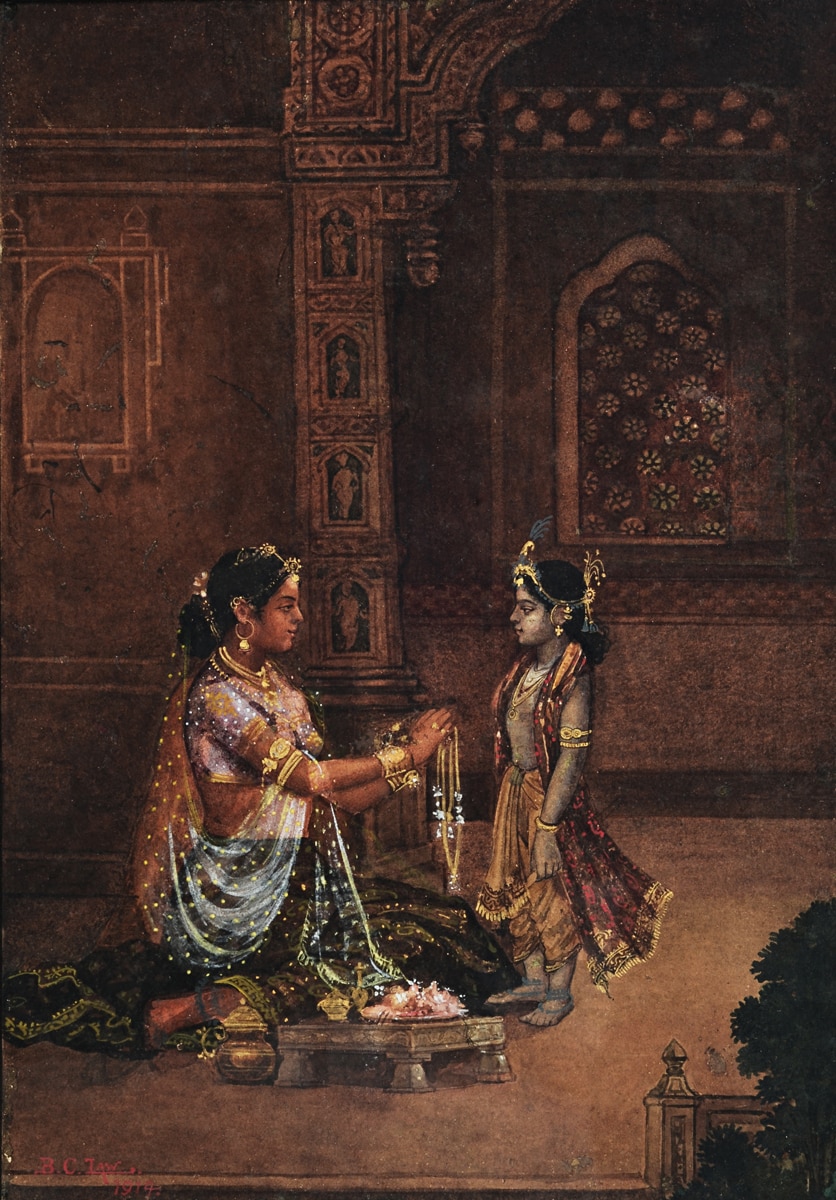
He did not care to get handsome revenue. But, he kept in mind the interest of the buyer in his art. Buyers who have an understanding of art will preserve the artwork in good condition.
This was the opinion of Jamini before selling each of his arts. On the Jamini Roy Paintings there was a big impact of the simplicity of Kalighat paintings.
Achievements and Awards
Fame of Jamini Roy Paintings
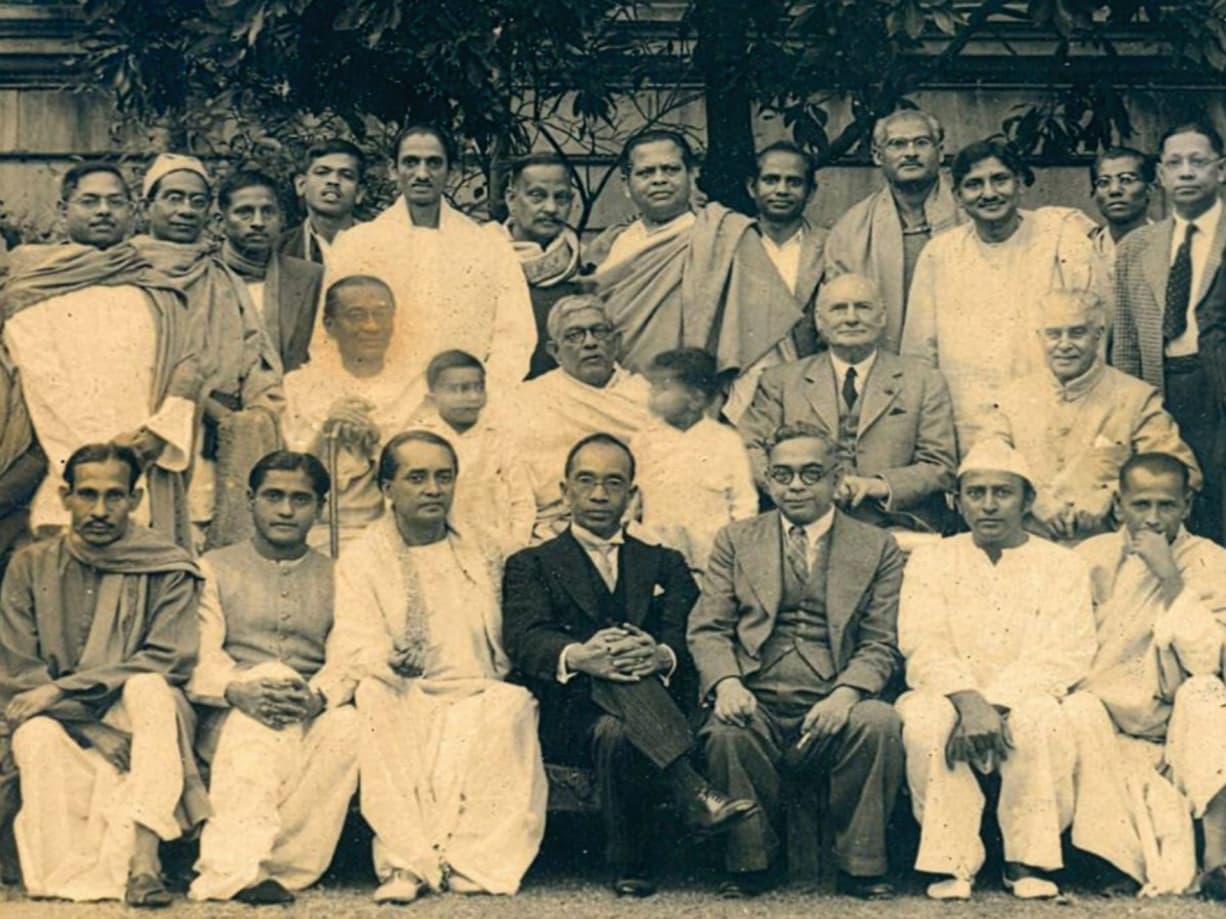
After years of agonizing struggle, Jamini Roy, the artist, had arrived at an international level. The spread of the fame of Jamini Roy abroad was as quickly as in his own country.
However, it was wrong to state that his recognition came from overseas. In the 1930s, a significant part of the opinion came out to support him.
Notable among them were a group of intellectuals and Bengali poets. They recognized the development of an artist of international stature.
One of these was the poet Vishnu Dev, who had immersed himself in the paintings or art of Jamini Roy for almost 40 years.
Padma Bhushan
After adapting the Indian traditional Art, he won the hearts of thousands of people. He chose to abandon contemporary European colors and materials in favor of using Indian colors and art supplies.
The Indian government awarded him the Padma Bhushan in 1954 CE for his special contribution to the art field.
Death
Last Supper of Jamini Roy
Nevertheless, he would begin painting Christ last supper. The thing he had done quite a few times previously. He would finish the drawing on the surface. That is & the colors were to come in all their splendor.
Fall of Health
In 1970, he was 83 years old. Age had begun to catch up with him. His failing health prevented him, but sitting in his workplace, he made efforts to beat and needed to. But the fingers won’t move, and the eyes were playing with cruel tricks.
Death of Jamini Roy
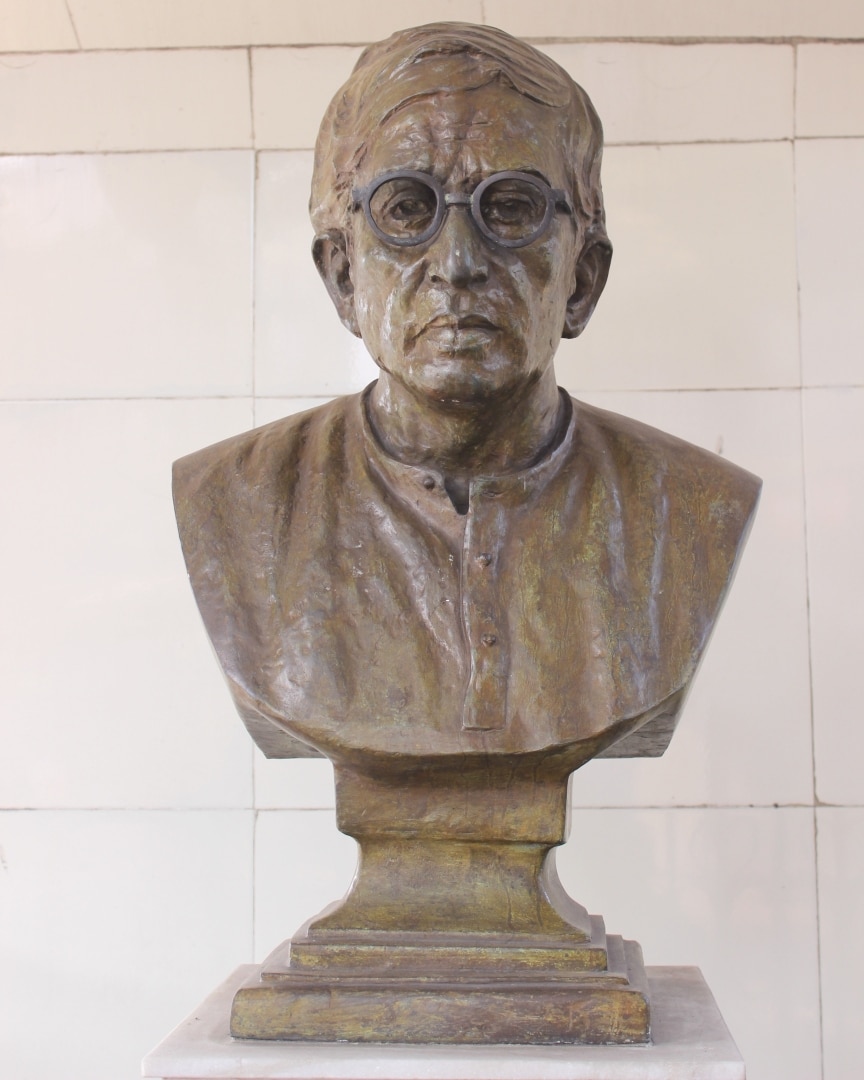
However, the mingling never got going. The Last Supper was left incomplete as the chest of Jamini caught fire, leading to pneumonia. Jamini Roy survived his first attack.
His second attack was acute, though the doctors were amazed by eluding death. Again, the end came in 1972, on the 24th of April. The month he had been born.
If you enjoyed the life story of Jamini Roy, please subscribe to our free newsletter for more biographies. Also, share this article to inspire us to write new biographies like this one.
More interested readers can read Jamini Roy Biography, which depicted his story with a different perspective.
Images Credits
- Featured Image: Jamini Roy in the exhibition of his paintings, Inspired by: cea +, Source: Flickr
- A Photograph of the Renowned Painter Jamini Roy from West Bengal, Credits: cea +, Source: Flickr
- A Real Photograph of Jamini Roy taken in his Workspace, Credit: alchetron.com
- A painting of Jamini Roy depicting indian women sitting in a boat and others boating from both ends, Credits: San Diego Museum of Art (Public Domain)
- A painting made by Jamini Roy depicting Yashoda with Krishna, Credit: B C Law (Public Domain)
- Active artists in Calcutta in 1929 CE Gobardhan Ash, Jamini Roy, Perci Brown, Atul Bose in group photograph, Credits: Wikimedia (Public Domain)
About the Author
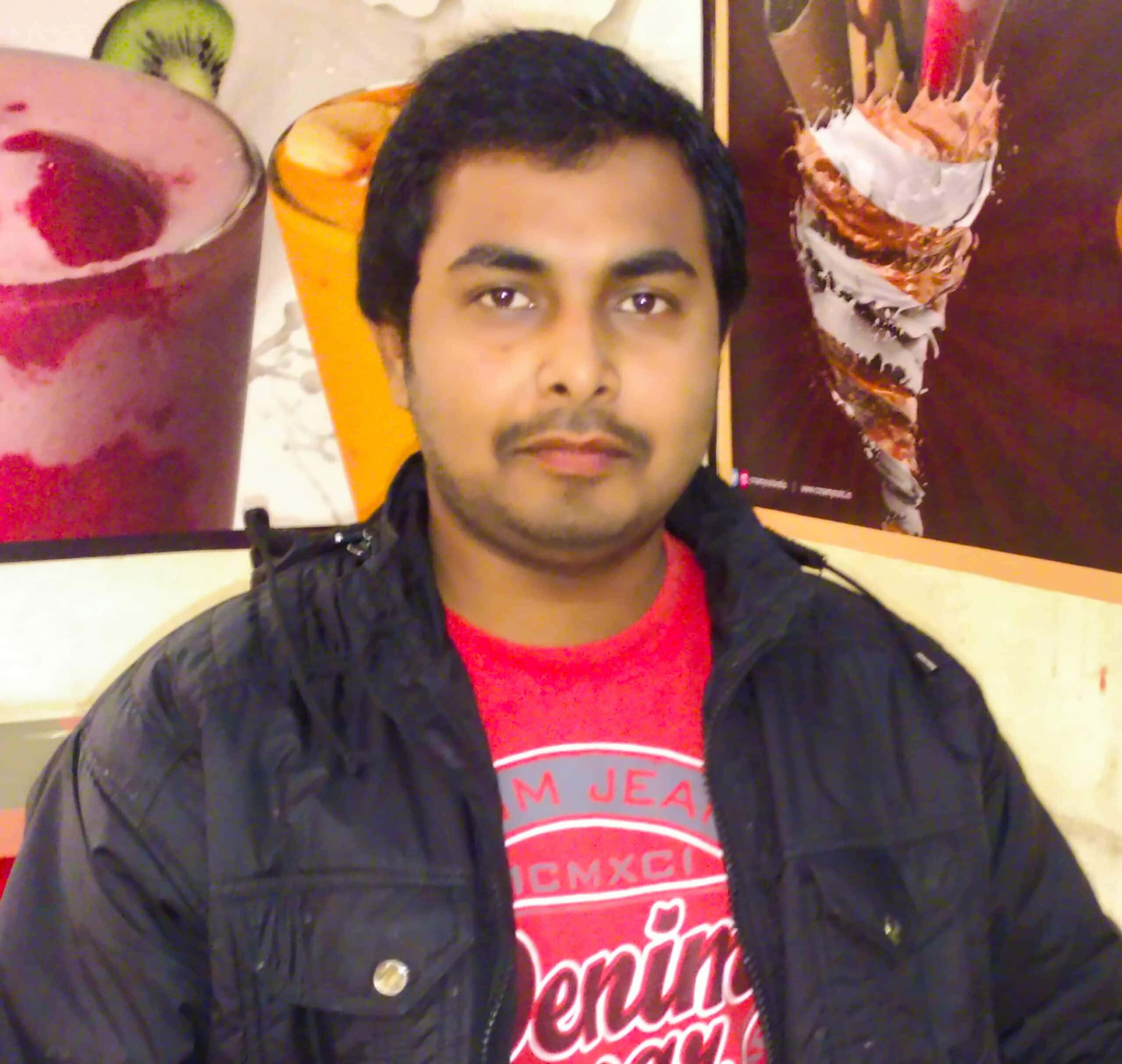
Ashish Salunke
Ashish is a skilled biographer and content writer specialized in crafting captivating historical narratives. Through HistoricNation, he skillfully merged his IT expertise with the art of storytelling.
